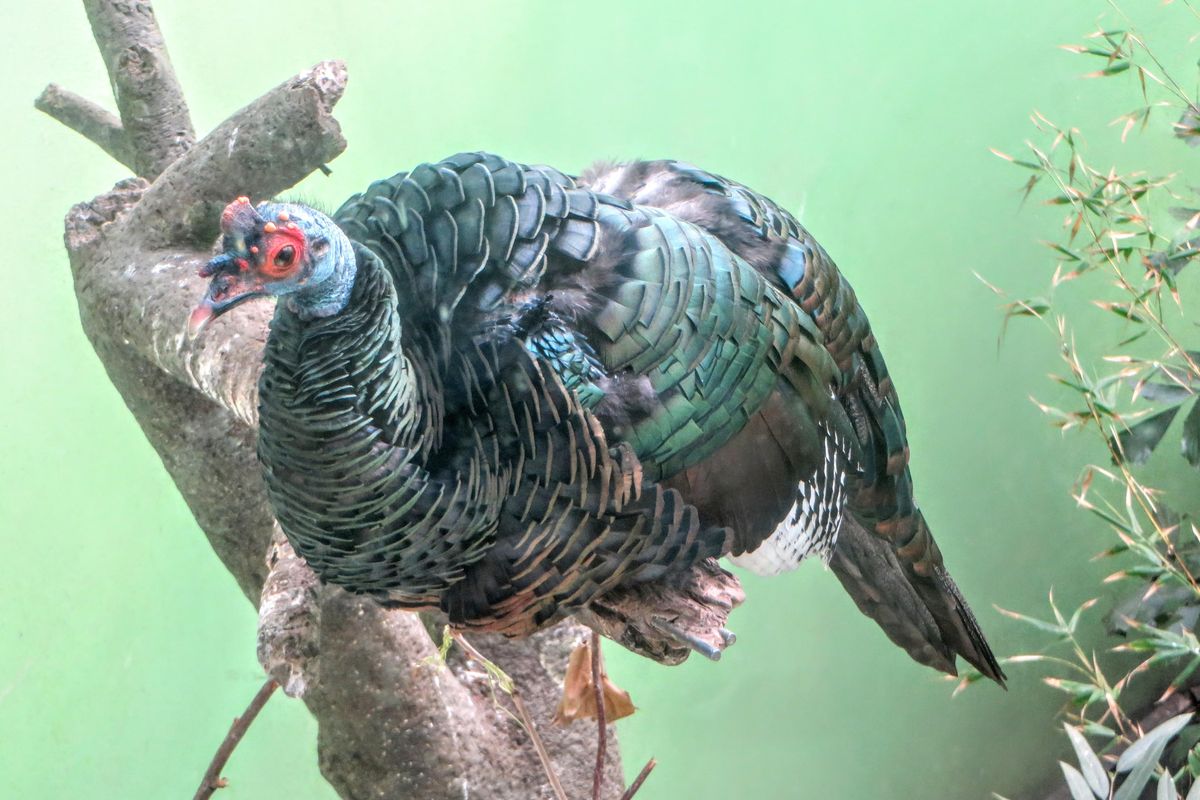Colorful turkey lights up Thanksgiving Day

Imagine a wild turkey, the kind you might see destroying your yard.
Now look at your Thanksgiving bird. A domestic turkey grown to be plump and tasty. Finally, think of the bright, luxurious colors of a peacock.
Mash the three together.
That’s what the ocellated wild turkey, a turkey native to Mexico’s Yucatan Peninsula, Guatemala and northern Belize, looks like.
The colorful turkey is in the same genus as the North American wild turkey, but is a different species.
Ocellated turkeys have bright, eye-catching plumage. The animal gets its name from the eye-like spots on its tail feathers, writes Tom Knight, a retired Washington Department of Fish & Wildlife spokesman.
Knight, who retired early in 1978, was involved with the introduction of North American wild turkeys to Washington state in the 1970s.
The ocellated turkey is the smallest of the six North American wild turkey species and has no beard. At their peak, males can weigh 12 pounds and females 8 pounds.
“The iridescence of the plumage is truly incredible,” Knight said in an email.
Unfortunately, ocellated turkeys are threatened in the few places they live. Human development, subsistence hunting and habitat destruction are believed to be key reasons for the decline.
“When you are staring at that fat, domestic carcass on your dining room table this Thursday, think of its awesomely beautiful relative in the jungles of Latin America,” Knight said.